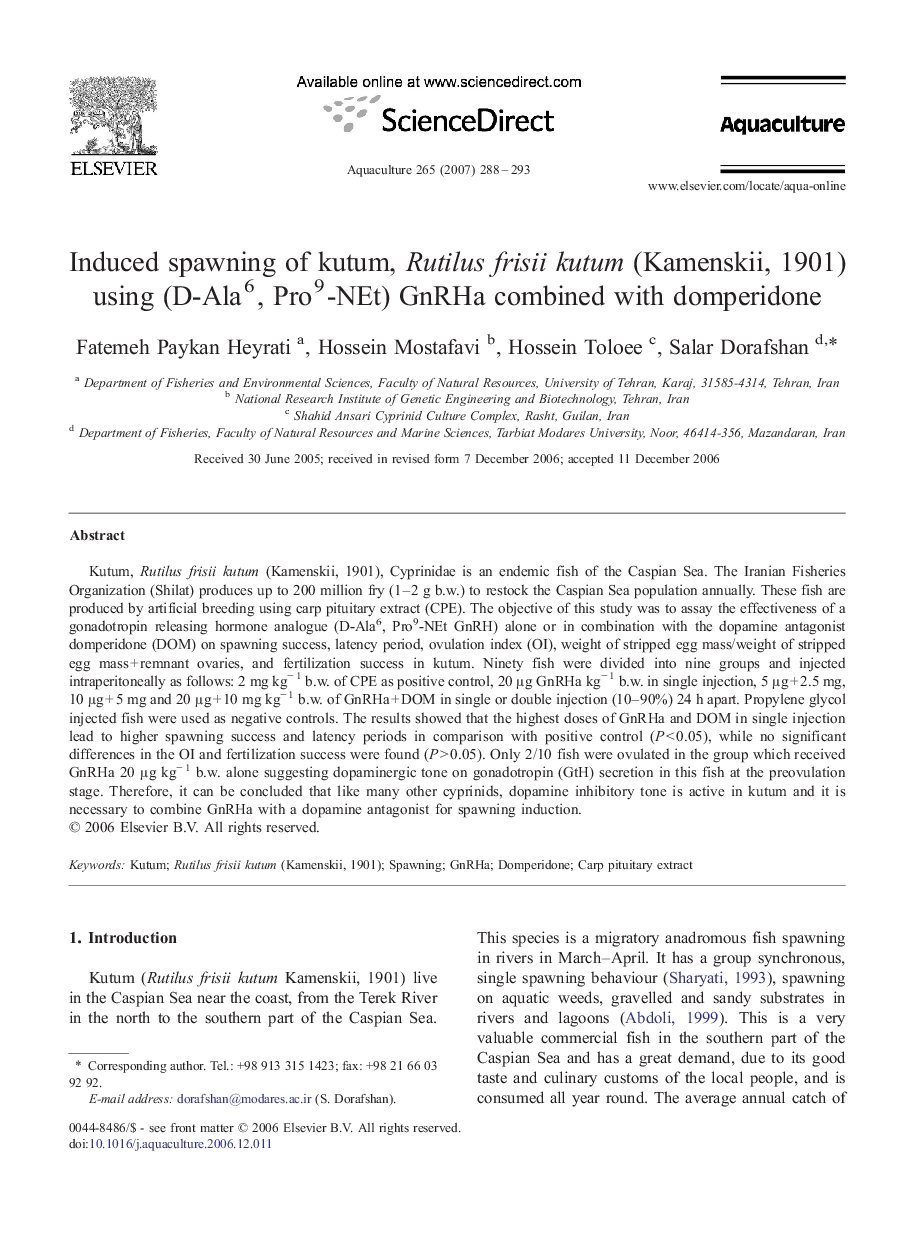| Article ID | Journal | Published Year | Pages | File Type |
|---|---|---|---|---|
| 2425634 | Aquaculture | 2007 | 6 Pages |
Kutum, Rutilus frisii kutum (Kamenskii, 1901), Cyprinidae is an endemic fish of the Caspian Sea. The Iranian Fisheries Organization (Shilat) produces up to 200 million fry (1–2 g b.w.) to restock the Caspian Sea population annually. These fish are produced by artificial breeding using carp pituitary extract (CPE). The objective of this study was to assay the effectiveness of a gonadotropin releasing hormone analogue (D-Ala6, Pro9-NEt GnRH) alone or in combination with the dopamine antagonist domperidone (DOM) on spawning success, latency period, ovulation index (OI), weight of stripped egg mass/weight of stripped egg mass + remnant ovaries, and fertilization success in kutum. Ninety fish were divided into nine groups and injected intraperitoneally as follows: 2 mg kg− 1 b.w. of CPE as positive control, 20 μg GnRHa kg− 1 b.w. in single injection, 5 μg + 2.5 mg, 10 μg + 5 mg and 20 μg + 10 mg kg− 1 b.w. of GnRHa + DOM in single or double injection (10–90%) 24 h apart. Propylene glycol injected fish were used as negative controls. The results showed that the highest doses of GnRHa and DOM in single injection lead to higher spawning success and latency periods in comparison with positive control (P < 0.05), while no significant differences in the OI and fertilization success were found (P > 0.05). Only 2/10 fish were ovulated in the group which received GnRHa 20 μg kg− 1 b.w. alone suggesting dopaminergic tone on gonadotropin (GtH) secretion in this fish at the preovulation stage. Therefore, it can be concluded that like many other cyprinids, dopamine inhibitory tone is active in kutum and it is necessary to combine GnRHa with a dopamine antagonist for spawning induction.
